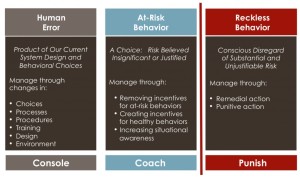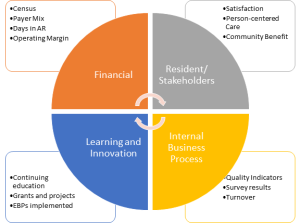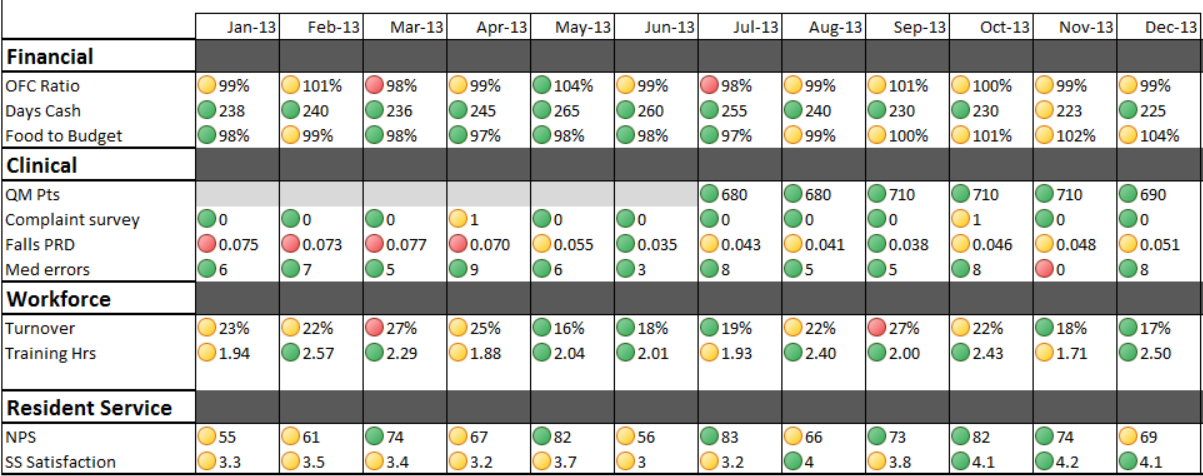Today, CNN ran an article about a new app called “Cloak,” which plots check-ins from Instagram and Foursquare on a map so you can avoid your friends and exes. It’s a great use of technology on the micro-personal level, but what about avoiding cancer or loneliness or anything else in health that costs society significant resources? We’ll come back to this in a second.
I just returned from the LeadingAge PEAK conference, which took place this week in Washington, DC. Speakers and providers both shared tremendous interest around innovation and technology, and it was exciting to be with hundreds of passionate, committed aging services professionals. But as folks talked about innovation in their organizations and communities, I was left rather dumbstruck: hardly anyone is doing anything new!
In a session on innovation, one provider shared how they were piloting a program to bring elementary school children to their campus. The room cheered in encouragement… and I just about choked! Intergenerational programs are fantastic, absolutely. But they’ve been occurring for decades! We already know they generally have positive outcomes for both the young and old. This mistaking replication for innovation is something I see replayed time and time again in aging services because of a lack of good information sharing, and, more so, a lack of investment in disruptive innovation.
The Sunday New York Times magazine contained an article by Yiren Lu entitled, “Silicon Valley’s Youth Problem.” Among her theses:
1) Current Silicon Valley startups are flush with youth and talent, the result of which has been an explosion of new apps and interfaces between technology and the world. At the same time, less of the young talent has been dedicated to innovation in the boring parts of tech: semiconductors, legacy software, and other core infrastructure. In her words, “Why do these smart, quantitatively trained engineers, who could help cure cancer or fix healthcare.gov, want to work for a sexting app?”
2) Young startups appear adverse to age and experience, believing older tech workers are too slow, too cautious, and too boring. “The problem is that they [older tech workers] may be making more reasonable steps, but they’re making fewer steps. It’s hard to compete when you’re moving slower, even if you’re moving in a consistently correct direction.” Hardly one-sided, older workers may also feel out of place. “The flip side of the kind of cohesion I saw at Stripe is that it can be off-putting to people outside the circle. If you are 50, no matter how good your coding skills, you probably do not want to be called a “ninja” and go on bar crawls every weekend with your colleagues, which is exactly what many of my friends do.
3) The most innovative companies are combining the young and old: “As David Dalrymple, a technologist in the valley, told me, “The most innovative and effective companies are old-guard companies that have managed to reach out to the new guard, like Apple, or vice versa, like Google.” ”
Aging services is suffering from exactly the opposite challenge:
1) An over-reliance on age and experience, leaving younger colleagues disillusioned with the slow pace of change, stifling working conditions, incomprehensible benefit offerings, and lack of entrepreneurship.
2) A lack of true innovation, with tremendous resources wasted on duplication of efforts and replication of existing programs.
3) A lack of quick action, agile entrepreneurship, and the inevitable frequent failures that lead to novel solutions and rapid innovation.
4) A dearth of organizations– whether providers or vendors– consciously combining youthful tech talent and rugged industry experience in disruptive ways.
At the PEAK Expo, vendors were sharing their own new offerings:
- An IPOD touch-based call system that connects to nothing else. (Not only is the device $150 more expensive than you need, but it doesn’t even provide an advantage over a pager and walkie talkie. What about devices that seemlessly connect to the EHR and pull forward the care plan information? That can push data back to the EHR for recording ADLs at the point of care? That could suggest an appropriate anecdote, story or question to share while assisting with care?)
- Several EHRs still written in .NET, and with interfaces that still look like the 90’s. (Why are most apps I use intuitively designed and functional? Why can I deposit a check into my bank account or file an insurance claim after a car crash on my phone, but I can’t document skin assessments and pressure wounds in the same way?)
- Phillips LifeLine, with their new, cellular-enabled pendant. (First, finally! And second, my Motorola Droid from five years ago had the same technology and more– so why does LifeLine still cost an arm and a leg and look like a LifeLine?)
- The Green House Project, which is certainly better than institutional facilities, but hardly revolutionary in terms of what technology could allow us to do. (Why are we still spending millions on bricks and mortar solutions that are only marginally better than what we have today?)
And LeadingAge itself, bless their wonderful, committed hearts, talked about an important new initiative: Namestorming a new term for CCRC.
Join us in developing a new name for continuing care retirement communities (CCRC) that resonates with the next generation of older adults.
New focus was given to this idea on a field-wide level following the presentation of new Mather LifeWays consumer research.
The research highlighted the emotional barriers the CCRC name was creating with consumers. Based on this research, Mather LifeWays, along with LeadingAge, decided to spearhead an industry wide renaming project. Introducing theCCRC NameStorm!
Please. It’s not the name that’s the problem; it’s the product. Charles Duhigg, the leadership keynote speaker at PEAK 14, shared the story of Proctor and Gamble’s almost flop with Febreeze, which seems ironically similar in this case: Febreeze almost failed not because it didn’t work (or had a bad name), but because it didn’t connect appropriately to consumers’ habits. I wonder what Duhigg might stay about the Namestorming initiative.
Writing in Forbes, David Shaywitz responded to Lu’s NYT’s piece with a thoughtful article a few days later, “What Yiren Lu’s Magnificent Portrait Of Silicon Valley Can Teach Us About Digital Health.”
“Lu’s characterization of the valley not only rings true, but also helped me better understand the valley’s approach to healthcare – or perhaps less diplomatically, why young developers’ approach to healthcare (to the extent they’ve deigned to approach it at all) seems to have generated far more heat than light, and resulted in thousands of pointless apps, and remarkably few impactful innovations.”
He continues:
I suspect that materially impacting healthcare – i.e. significantly improving care or reducing costs – requires tolerance for complexity, patience to demonstrate value, fortitude to deal with regulators and entrenched incumbents, and respect for the distinct importance of human health. I’m not sure there are all that many hot shot web tech developers in whom these qualities bloom – though Uber’s (as I’ve discussed) andTesla’s battles with regulators and incumbents are positively inspirational.
It’s incredibly compelling to envision the integration not only of generations, as Lu imagines, but also of domains – finding a way to functionally unite fearless creative developers with experienced healthcare experts equally determined to change the world.
There is some truth to this. I’m hopeful about companies like CareMerge and HealthSense who are working feverishly in the direction of using healthcare IT innovatively to tackle issues of cost and quality. But even with those two companies, there is a lingering of something old: reporting vitals via ugly white remote sensors in the home and a care portal that is not much more innovative that a slew of collaboration tools already years old in other industries.
Take a look at Canary. This is the sort of disruptive thinking we need in healthcare now:
There are a lot of “smart home” companies out there trying to “connect” things – dishwashers, lights, fridges, TVs, crockpots, etc. At Canary we prefer to solve problems.
We started with home security because it’s a need shared by hundreds of millions of people around the globe. We know because we’ve already sold Canary in 78 countries, and proved through our Indiegogo campaign (the most successful ever) that there’s a real demand for affordable intelligent home security that just works. Rather than being all about preventing the bad (including fires and floods), Canary also helps out in other ways whether it’s letting users watch their kids play during the middle of the day or providing a digital neighborhood watch while they’re on vacation.
Imagine remote monitoring that provides not only the data flow we need, but addresses the real issue at hand: my mother and yours living alone in their houses. Sure I want to know she’s getting up, using the refrigerator, and doesn’t likely have a UTI (all issues addressed by HealthSense, for example). But I want to call her in HD video to say hi in the morning; I want to play scrabble on my lunch with her through her TV. I want her to be able to text me quick questions, because she’s uncomfortable bothering me on the phone with “silly things,” (I’d love to try and explain my SnapChatting to her…) and respond in a way she can easily see and understand. I want her to book medical appointments and check her records as easily as I can use Mint or AirBnB. This technology is already here, and we need to start putting it to better use.
Bill Gates said in TechCrunch this week that “Innovation in California is at its absolute peak right now. Sure, half of the companies are silly, and you know two-thirds of them are going to go bankrupt, but the dozen or so ideas that emerge out of that are going to be really important.” I agree with his point, but, in aging services especially, we will need to be more focused on fostering disruptive innovation, rather than waiting to see how SnapChat and Cloak will play out. We need to stop wasting time on replication couched as innovation; we need to stop trying to force old workflows and predilections into new technological solutions. (Looking hard at you, EHRs and remote patient monitoring!)
After all, the technology and talent is already here– and my mother doesn’t have a whole lot of time left.




